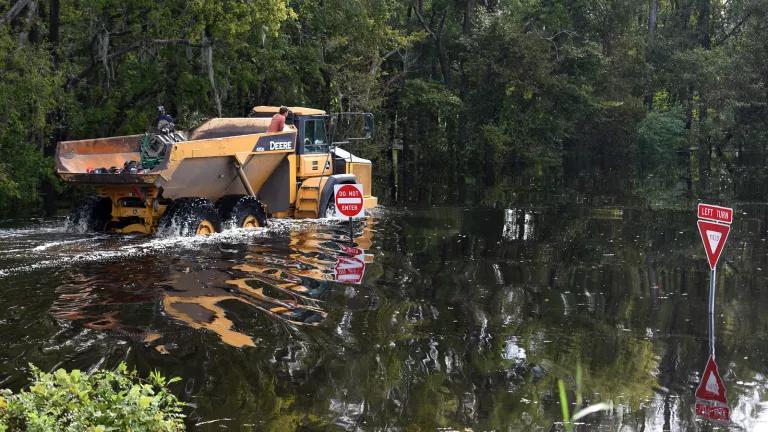The most difficult part of solving any problem is admitting that it exists. Only then can real progress be made. For many years, we witnessed climate deniers hold the world back from tackling climate change because they rejected the notion that a problem existed. With the recent breakthrough in Paris, the world overcame the influence of climate deniers to admit that a serious, planet-altering problem exists, and to agree to collective action to address the problem. The same acknowledgement is needed in the world of California water if we are going to keep at bay the "drought ... ghost that thumps on our walls in the century ahead," as Matt Weiser so eloquently puts it.
Houston, we have a problem: the collapse of the Bay-Delta. One of the positive aspects of California's drought is that many more Californians are now aware of the vital role that the San Francisco Bay-Delta plays in the state's water supply. It is the source, hub, and switching yard for drinking water for about 25 million Californians and irrigation water for more than 3 million acres of farmland. When the health of the Bay-Delta is threatened, so is its ability to provide these critical functions, not to mention its ability to sustain a multi-million dollar commercial salmon fishing industry, fishing communities up and down the coast, and healthy rivers for people to boat, swim, fish in, and enjoy for generations to come. And there are few better indicators that the health of the Bay-Delta is threatened than when it can no longer sustain the salmon and other native fish that rely on its cold, clean, flowing waters to survive.
These fish populations have collapsed in recent years, at the same time as the Delta has been deprived of freshwater flows, the water has become too salty for human use, toxic algae blooms have multiplied, and invasive species have choked pumps and waterways. Few credible observers dispute these conditions, and the urgent need to address them. Earlier this year, Dr. Jay Lund, Director of the Center of Watershed Sciences at UC Davis, gave the state a "D" on its efforts to protect the environment in the drought, noting that the state was "unprepared for the test, or studied for a different test." Dr. Peter Moyle, the state's preeminent fish biologist, points out that, not only are several Delta native fish likely to become extinct in the wild in the next year or two, but the entire aquatic fauna of the state is in serious trouble. Even State Water Resources Control Board member Steven Moore recently acknowledged that the State Board has "two strikes" against it for its efforts to protect native salmon over the last two years, echoing Board staffs' warnings that "[t]he status quo these past several years isn't working for protection of fish and wildlife."
Yet, when NRDC recently gave the state an "F" on its efforts to protect the Delta ecosystem during the drought, the response of the Brown Administration was to give itself an "A" for effort and a "B" for execution. Perhaps the Administration believes that the positive steps that it has taken in areas like improving urban water use efficiency and water recycling, where NRDC gave the state "Bs," outweigh its dismal performance on protecting fish and wildlife. Perhaps, like 6-year-olds playing soccer, the state believes it deserves a medal for simply showing up. But, as the state itself has repeatedly stated, progress must be made in ALL of these areas if California's water management system is to improve. And simply showing up isn't enough for the rest of us who are counting on the state to ensure that we'll have healthy rivers and fisheries in the future, and a water supply that is less vulnerable to the worsening vagaries of drought that we face in a climate-changed future.
The Brown Administration needs to acknowledge that it has failed in its efforts to protect the Bay-Delta ecosystem, and quickly reverse course if it is to live up to the hopes and expectations of an anxious California. Here's a simple roadmap for 2016 to help the state improve its performance and avoid bombing a test that is too important to fail:
Step 1: Admit you have a problem. The Bay-Delta is in terrible shape and needs immediate attention to stem the decline.
Step 2: Stop waiving existing environmental protections in the Bay-Delta. That failed approach has taken more than 1.2 million acre-feet away from the environment over the last two years and given that water to other uses, worsening, rather than mitigating, the impacts of the drought on the environment.
Step 3: Strengthen Bay-Delta water quality standards, which are now about 20 years out of date and fail to reflect the best available science.
Step 4: Make significant investments in regional water supply solutions and reduce reliance on the Delta, consistent with state policy. The state is making good progress on advancing some regional supply solutions, such as improving urban water use efficiency and water recycling. But these and related investments in agricultural water use efficiency and stormwater capture must be expanded, and paired with meaningful steps to reduce diversions from the Bay-Delta ecosystem. This holistic approach allows the state's cities, farms, and environment to get better together.



